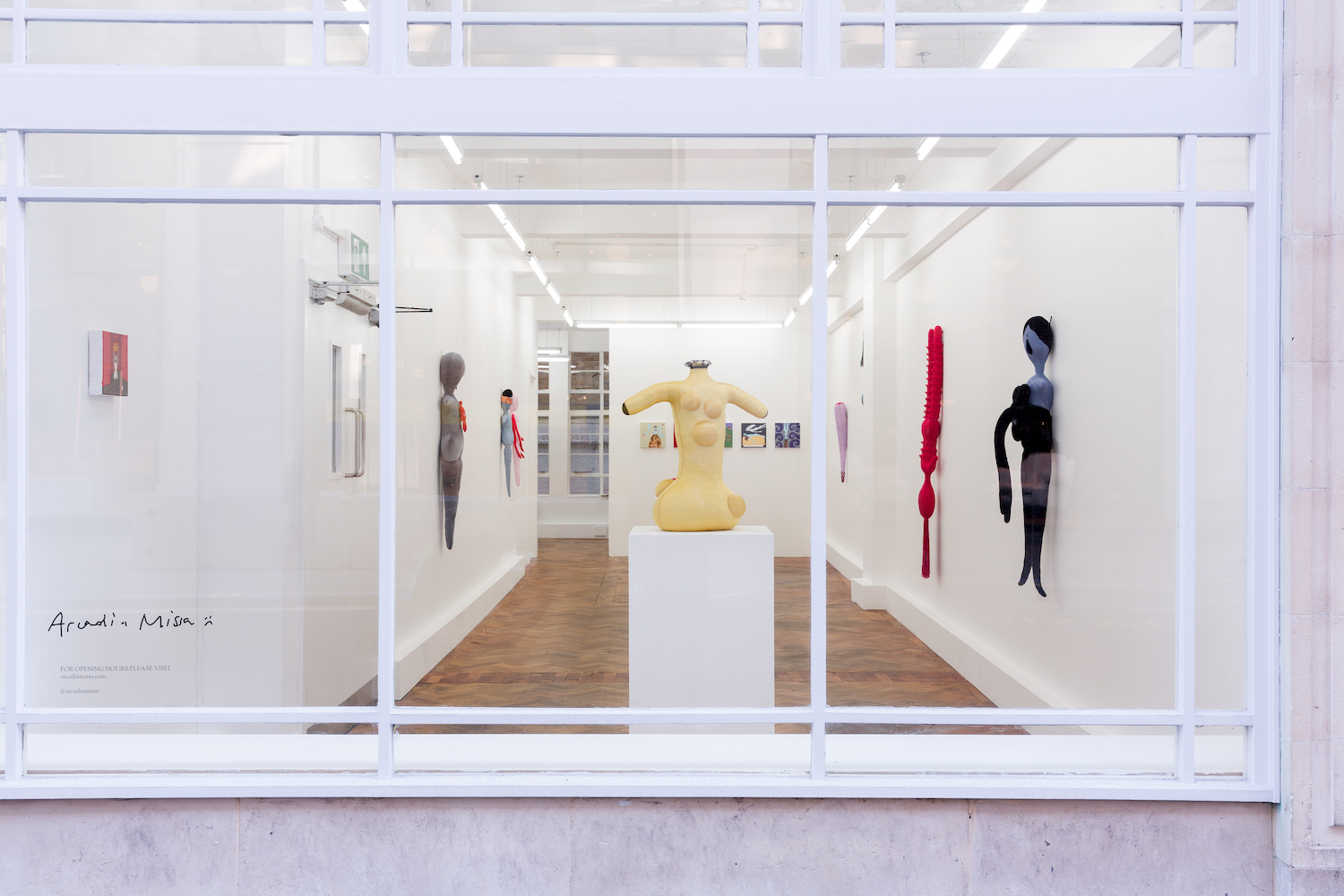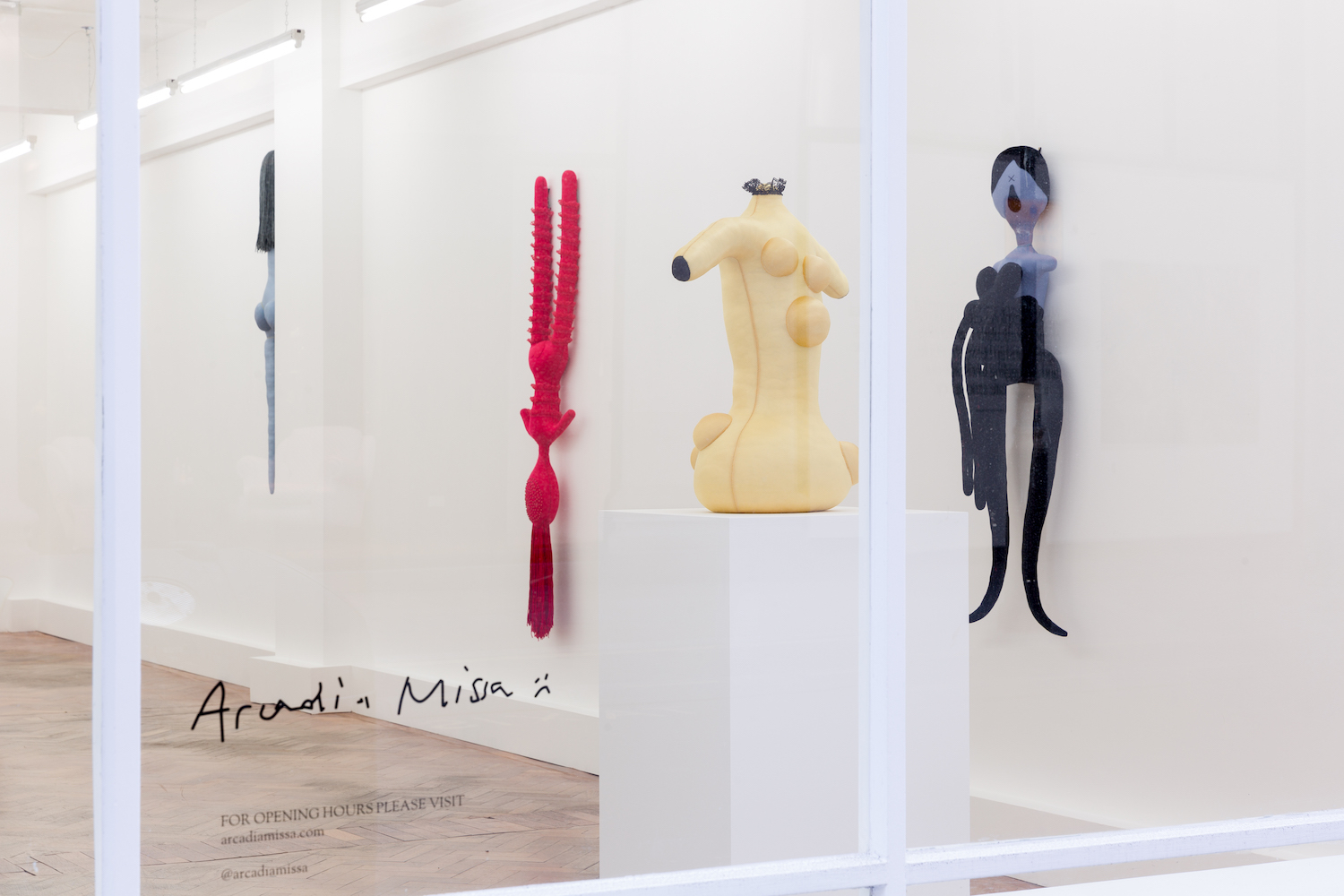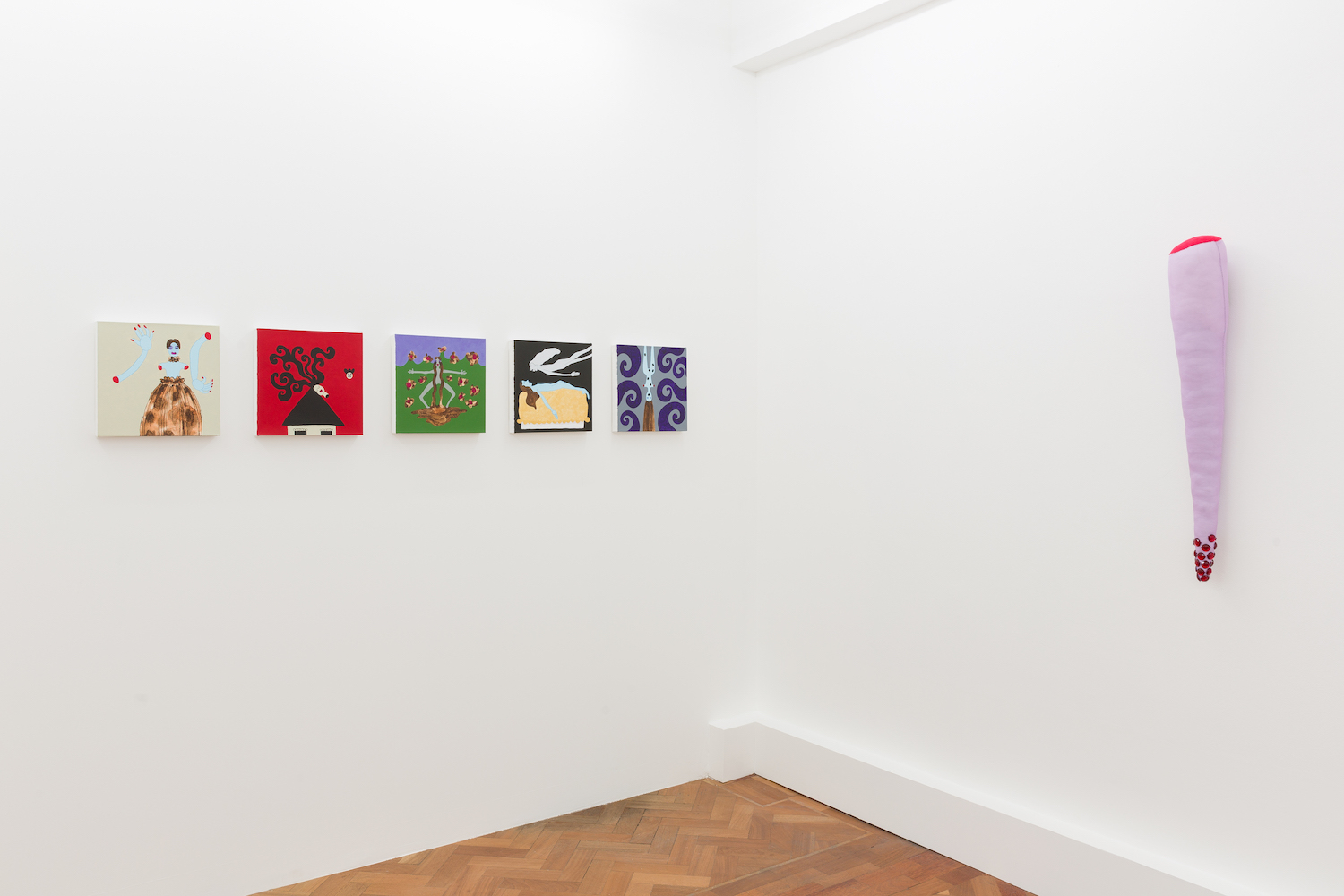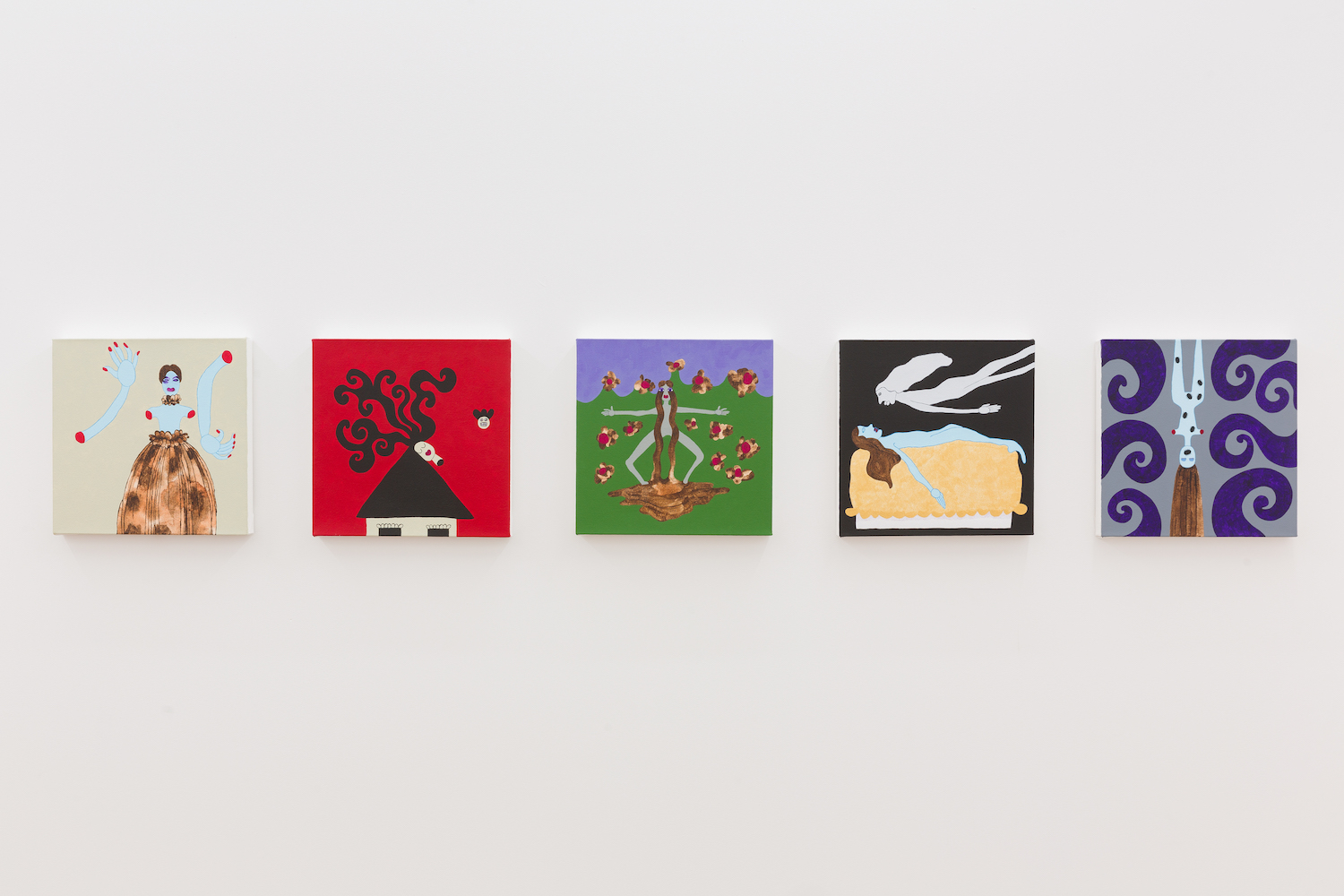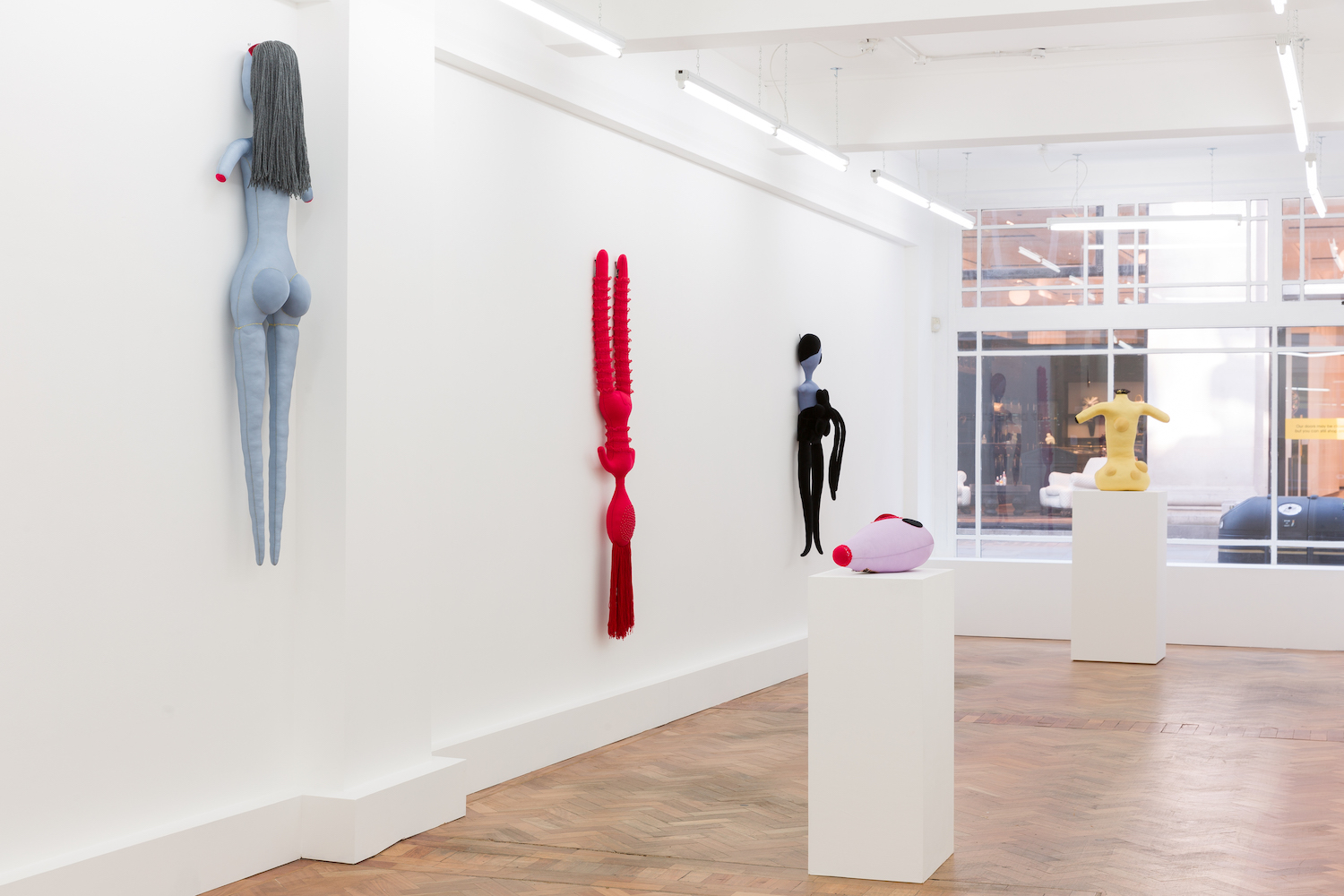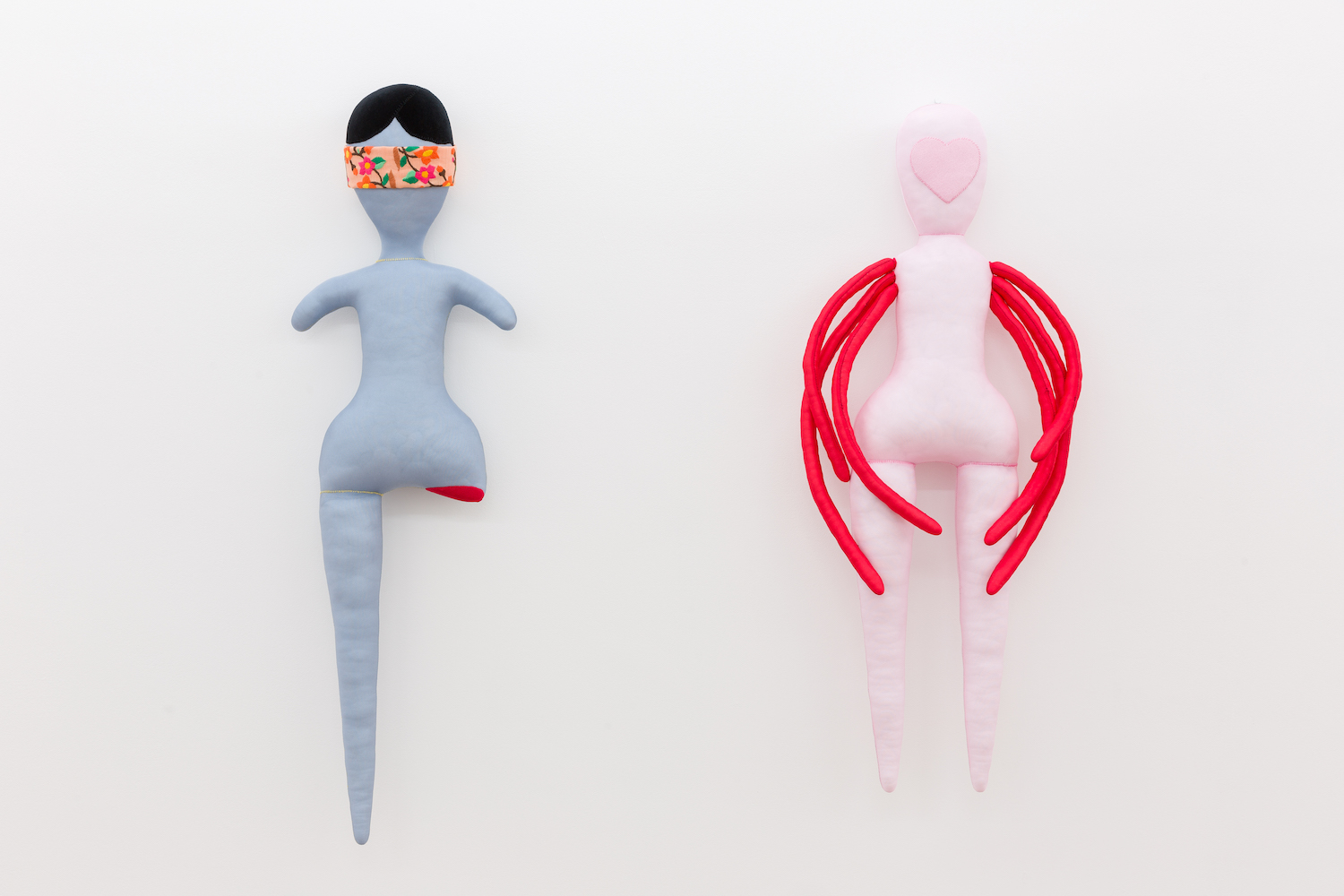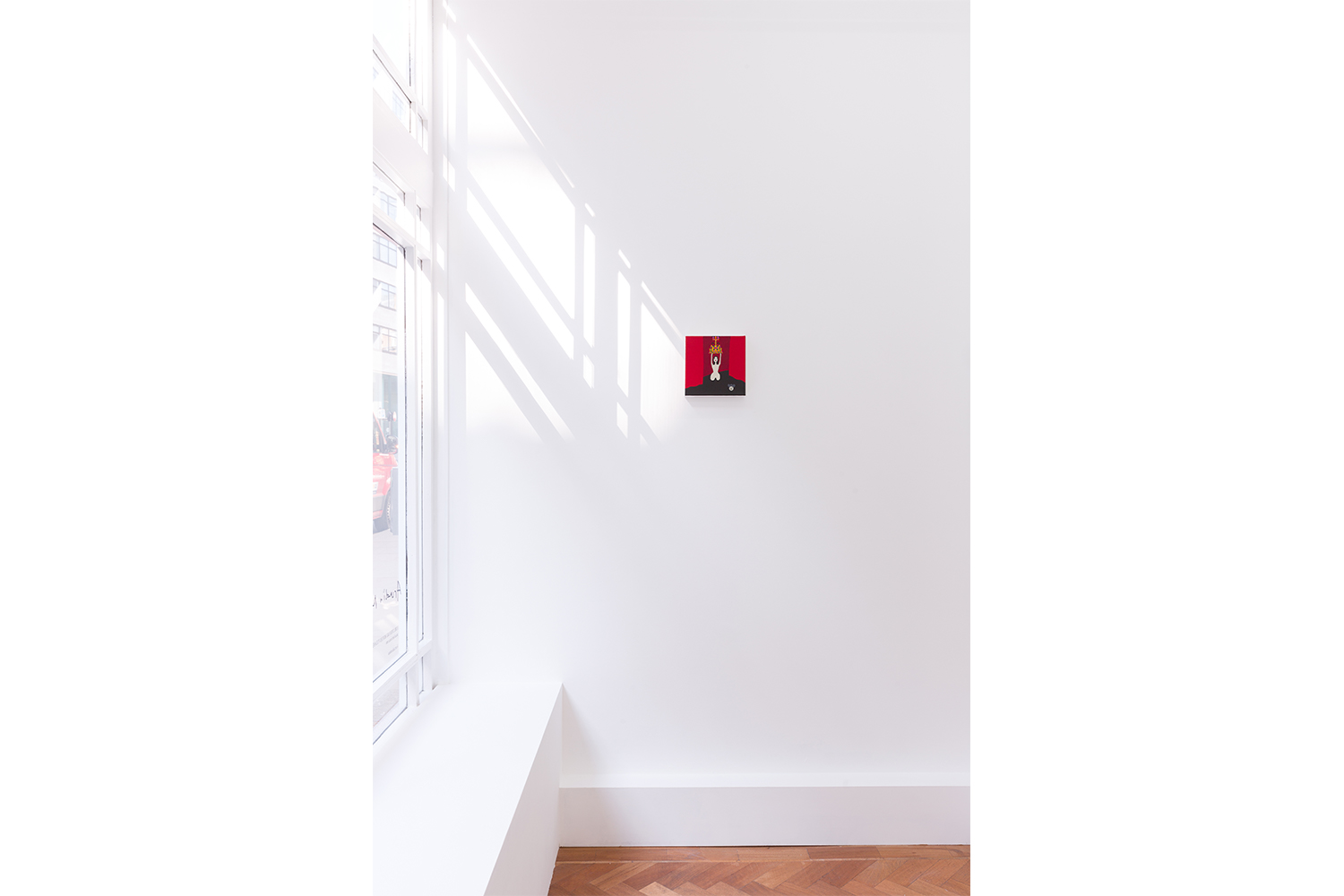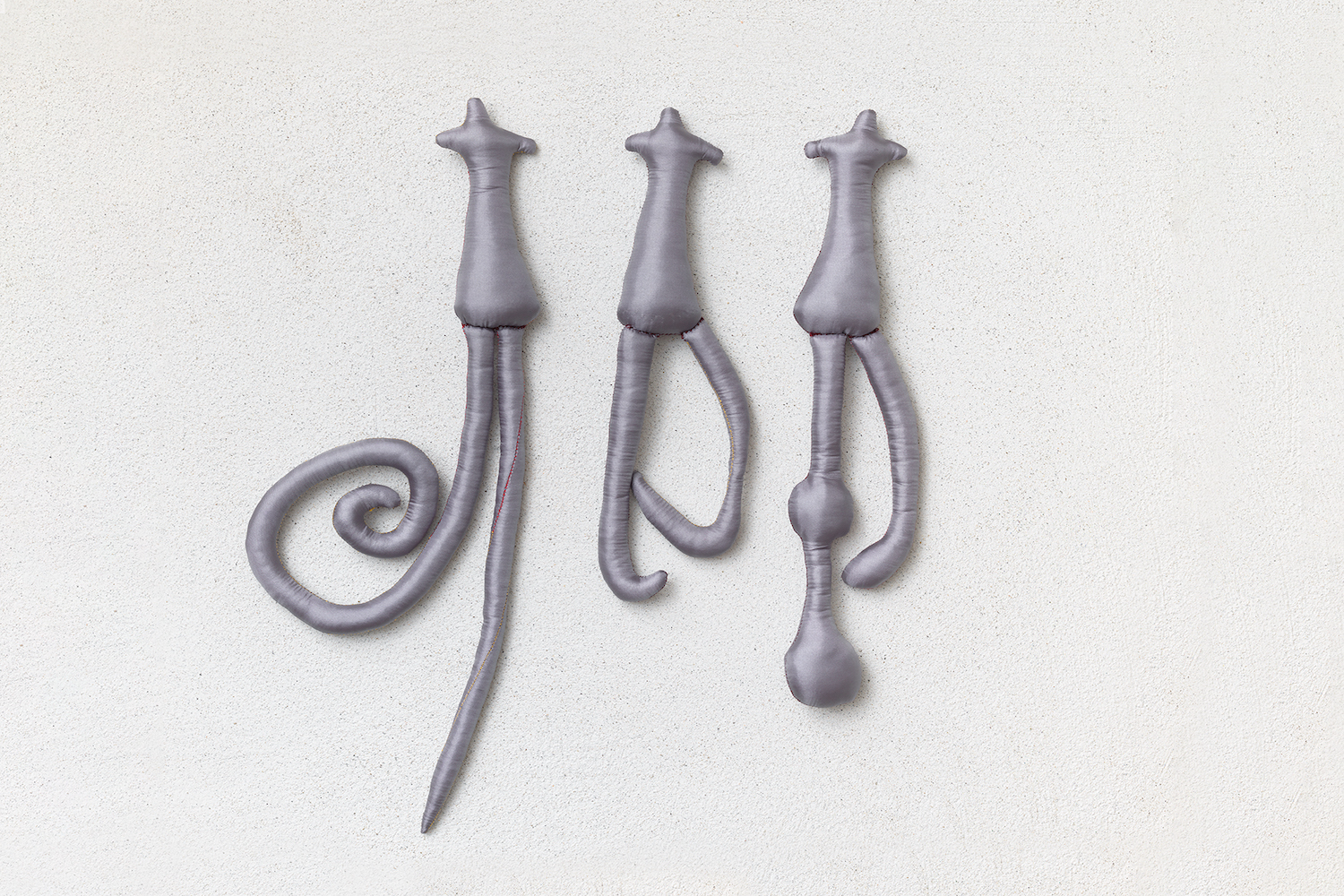Caroline Elbaor: First off, sincere congratulations on this pair of exhibitions. That leads to my initial question: Were these shows always planned to coincide with one another, or did the timing occur by chance?
Penny Goring: No, the timing is coincidental — scheduling for both had to change due to COVID restrictions, and the outcome was that the London show opened not long after the exhibition at Galleria Federico Vavassori in Milan. The works in each were made at different times and are part of different series.
CE: Can you walk me through the separate shows individually? What is/will be on view? How did you prepare for each, and decide which works to include where? In other words, how do you feel the two exist as standalone presentations? (Or, conversely, do you feel they function inextricably, working in tandem with one another?)
PG: The two shows function as standalone presentations that are also inextricable — because they are my shows, everything I make is entangled and connected, making the work is a continuous accumulation, each piece leads to the next or springs from earlier work, ideas submerge and resurface over time. I’m simultaneously looking backwards and forwards whilst always wanting to explore different mediums, new approaches, or revisit and expand on previous methods or themes.
CE: Although the shows are distinct from one another, in some ways they bookend the current time we are in. The work in the Arcadia Missa show was made during the latter half of 2019 and January 2020, just before COVID, whereas most of the work in the Federico Vavassori show was made during lockdown: So it’s pre-COVID and post-COVID, two different cycles of work, separated by time and world-wide catastrophe. The works in each show deviate in form, by being large doll sculptures and figurative paintings on canvas in London versus tiny doll sculptures, older sculptures, and abstract paintings on velvet in Milan.
PG: Further to this, the works at the Arcadia Missa show, “No Escape from Blood Castle,” belong together, I made them to be shown together, they are trapped in Blood Castle — by which I mean the Capitalist structures we ourselves cannot escape. And the works at Federico Vavassori also belong together — collectively they constitute a hellish garden where the very idea of living without torment can only ever be an enviable luxury, a dream, something to aspire to, a state of mind only snatched at briefly in moments of denial or delusion. In some ways, the title of the show — “Those who live without Torment” — does not directly refer to the world of the show itself, but rather, to that which it is lacking: which is the peace of mind many are forced to live without.
The doll sculptures at Arcadia Missa are not intended to literally represent, for example, dismemberment; their damages are metaphorical; each doll is an entity that embodies and manifests a particular state, and is an attempt to convey intense and discrete emotion by way of showing, for example with Grief Doll (2019), what grief can actually feel like. Grief Doll is forever wearing a Grief Flower, it is permanently strapped to her torso, where it constantly pours forth a flood of grief, represented by the long black velvet “stamens” that flow from its center and down towards the floor — this is intended to demonstrate how grief can be experienced bodily, distorting your perceptions and senses.
CE: Doom Doll (2019) — a smaller doll, perhaps child-size, with an amputated leg and wearing a blindfold, emanates vulnerability; it is helpless and it is obviously doomed. The amputation is not intended to shock or be gruesome — the site of the wound is a hand-sewn scarlet velvet patch, almost glamorous. The remaining lone leg becomes unbearably poignant, and the blindfold, an unmistakable indication of defenselessness, is formed from a piece of embroidered peach linen that I treasured for twenty years.
PG: I make these doll sculptures lovingly, honoring the emotions, the frailties, the symptoms of the act of living, whilst giving them a visual language that causes each doll to enact its own particular predicament. The dolls displayed in “No Escape from Blood Castle” are explicitly performing their feelings.
Excerpt from: No Escape from Blood Castle
GHOST TOURIST
DEVIL SCAMMER
FIBBING DRIVER
KNIFE BUZZ
HIP FLASK
BIGGER BIJOUX
MERCY FUCKER
BAG BIRD
GOLDEN BOLLOCKS
FUTURE BACON
ABSTRACT GAMBLE
CAPS LOCK
DARKER MATTER
DEEPER LOTION
TOXIC CIRCUS
DEATH TOLL
SEE-THROUGH NYLON
DISCO STRIPPER
FEVER FLOWERS
BOMB DROP
BLOODY CASTLE
DOLLY MOTION
SUGAR WIDOW
CLOCK STOP
Both shows are named after the poems I wrote whilst making them. The poems accompany the shows, and also act as press releases. I regard them as a kind of natural spillage, in so much as they are a written by-product of the thinking, imagining, and visualizing that informs and propels the work. The poems are material traces of the immaterial, foundational aspects of my process, and exist as an alternative medium for me to utilize. They come about unprompted during the making of the work and relate specifically to the content of each separate show. To my mind, they encapsulate the themes of the shows and also function as individual works in and of themselves.
In fact, the poems are actually a polished glimpse of what’s inside my private sketchbooks, which also act as diaries, where I habitually record my inner world — there is an untrammeled mix of anything I feel, hear, see, think, or dream, including TV shows and books, that moves me enough to explore it in the form of drawings and scribbled words. It is my place of freedom. These sketchbooks are in a sense my original source, where everything I make begins, and where the poems first appear, as incidental footnotes, diatribes, observations, lists, reminders, instructions, or messages to myself.
“Those who live without Torment,” as described earlier, is a wild and dangerous garden, a place where those few fortunate beings who live without torment would never want to belong.
The series of ten paintings on velvet that were made for this show are abstract, yet they could seem to suggest insect-infested plant-like forms. This aspect of the works and the poem I wrote while painting them became the initial elements that suggested the tormented garden. We then expanded on this theme by selecting three of my earlier works: Emergency Fence (2016), Doom Tree (2016), and Wrong Rabbit (2017), which seemed as though they were always intended for this garden.
Emergency Fence is a traditional suburban privet fence, but it hangs upside-down on the gallery wall, which causes the two long spikes that are supposed to be driven into the ground to hold the fence upright and in place (on the circumference of your perfect lawn, to demarcate the boundary of your property and safe happy life), to become inverted to suggest weapons of self-defense — those two sharp wooden spikes are a warning, like, actually, there are dangers you need to protect yourself from here, and this pretty fence needs to be subverted, repurposed, because the emergency is constantly upon us. Emergency Fence could kill, if it had to.
Alongside this stands Doom Tree, its drooping branches embroidered with a poem in scarlet thread on dense black velvets. This tree looks as if it has survived trial by fire — it’s a poem-tree — it’s a doom-poem, which across its various branches reads:
we invented love without loving
we trust in the grief of the night
give me the word
yes pleas thank you
poison poison
Wrong rabbit also belongs in this wild wrong garden. It is the wrong shape, wrong color, it is very carefully wrong, and it is embroidered with words proclaiming its wrongness: “Wrong Feelin, Wrong Face, Wrong Heart, Wrong Leg.” Hidden across its reverse is embroidered “Stolen From Penny,” suggesting my secret ambivalence at letting it go, this “Wrong Rabbit,” this wrong thing, even though I willingly gave it up. I find this idea of “Wrong Rabbit” having been stolen from me to be evocative of many losses, for example, how time steals youth.
Excerpt from: Those who live without Torment
300 pink and yellow butterflies
and they will never die
and they will live for 48 hours
and they will never die
today i am wearing a voluminous powder blue dress, waist-high fuchsia knickers, strappy red wedge sandals, heart, what didn’t kill me
Fragile gestures towards Freedom from Fuckery



